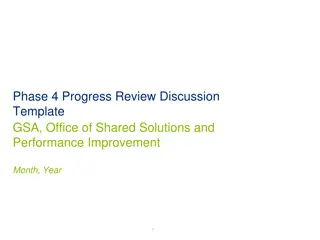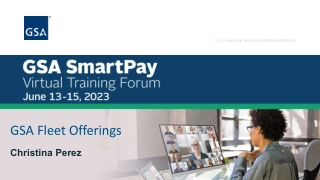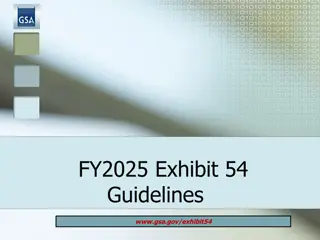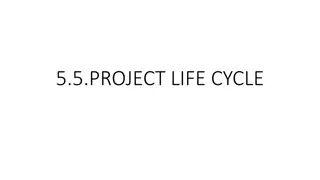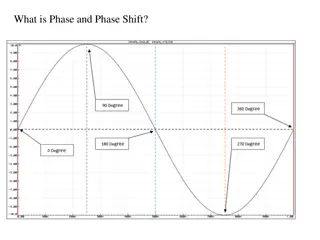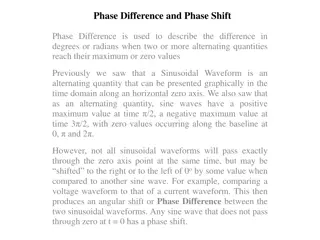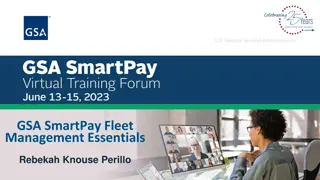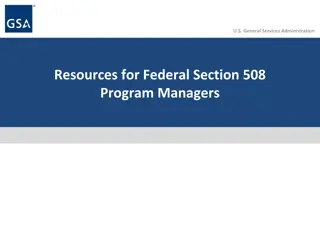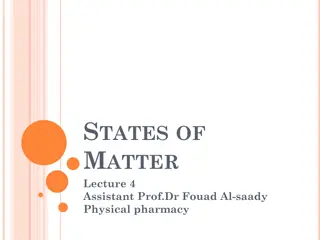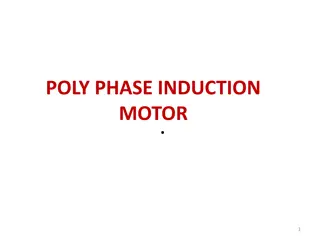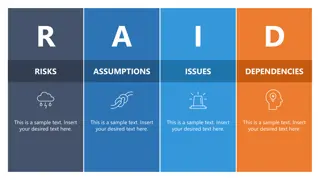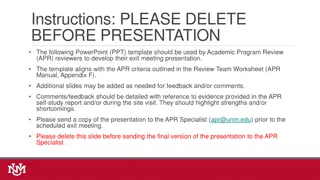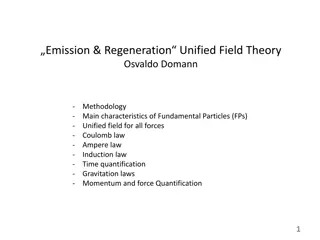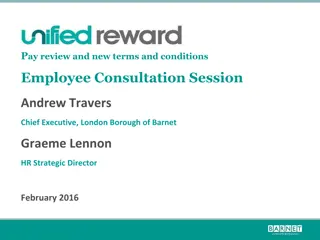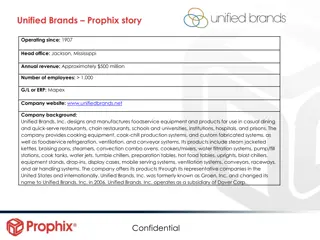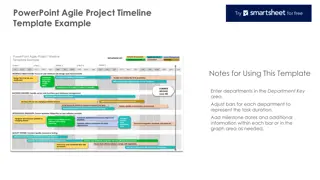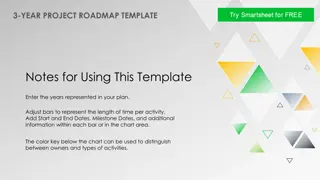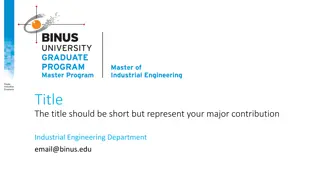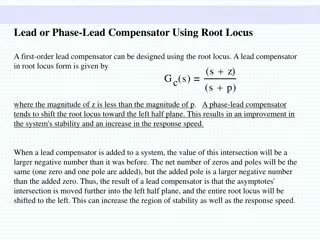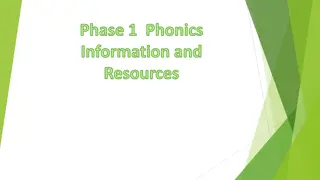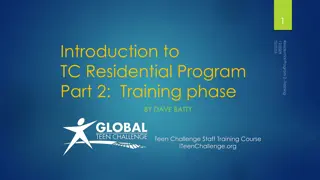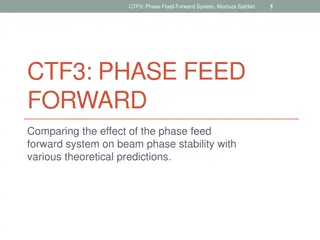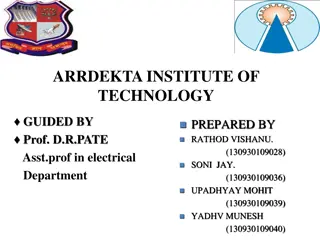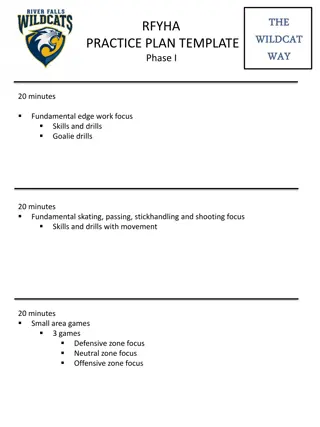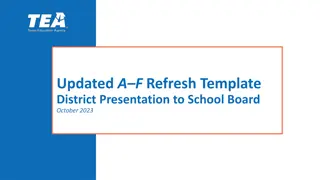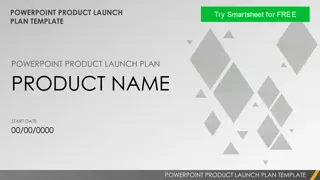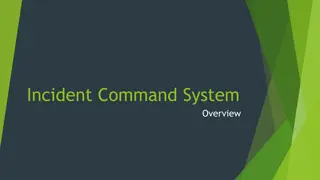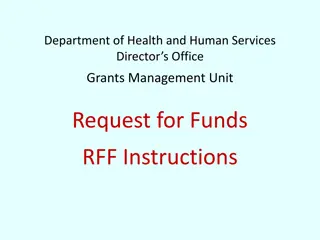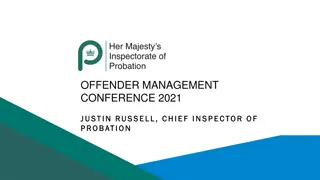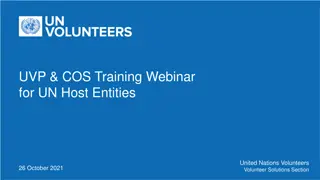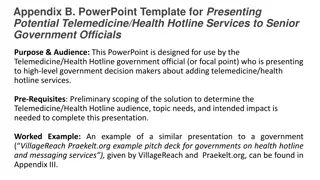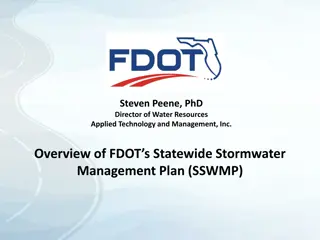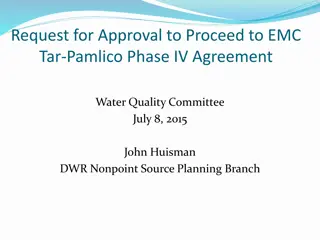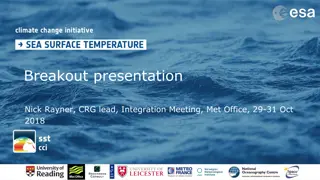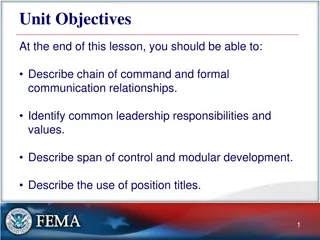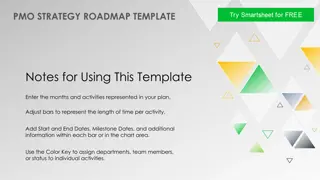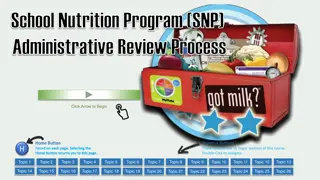Phase 4 Tollgate Review Discussion Template for GSA Unified Shared Services Management
This template provides a structured framework for conducting a Tollgate Review discussion involving the Customer, USSM, and the Tollgate review team. It includes questions to address gaps in business requirements, risk assessment, migration costs, budget impact, and alignment with office initiatives. The template offers instructions for completion and outlines the documentation required for the Phase 4 Tollgate Review to demonstrate readiness and gain approval.
Download Presentation

Please find below an Image/Link to download the presentation.
The content on the website is provided AS IS for your information and personal use only. It may not be sold, licensed, or shared on other websites without obtaining consent from the author. Download presentation by click this link. If you encounter any issues during the download, it is possible that the publisher has removed the file from their server.
E N D
Presentation Transcript
Phase 4 Tollgate Review Discussion Template GSA, Unified Shared Services Management Month, Year 1
Questions to be Answered This template is intended to guide a Tollgate Review discussion between a Customer, USSM, and the Tollgate review team Questions to Be Answered Reviewers Are there still gaps between common business requirements? Are they warranted? Service Area Managing Partner What is the level of confidence in the comprehensive risk assessment of the health of the project to identify major challenges and a mitigation strategy? Is the provider adequately prepared and resourced to deploy the solution and support the customer during O&M? Is the customer adequately prepared and resourced to go-live and operate during O&M? Are adequate plans in place to address known issues that will arise during O&M? USSM 4. Migration If there are changes to the total migration cost, are they reasonable? Current/future budget impact? Resource Management Office (RMO) (C&P); USSM; Office of the Federal Chief Information Officer (OFCIO) Does the effort align with each office initiative? M-Offices 2
Instructions for Completing This Template This template is intended to guide a Tollgate Review Discussion between a Customer, USSM, and the Tollgate review team To use this template: Use the source documents included within each slide to develop summary-level information that will help guide the Tollgate review Be prepared to discuss specific questions/content included on each slide before or during the Tollgate review Once complete, send this template and required documentation to the USSM M3 team (USSM.M3@gsa.gov)to schedule a Tollgate review meeting Direct any questions on content or information that should be included in this presentation to the USSM M3 team (USSM.M3@gsa.gov) 3
Documentation Required for Phase 4 Tollgate Review The following documentation is required in guiding a discussion to demonstrate readiness and gain approval for Phase 4. Agencies purchasing transaction processing services only will identify relevant activities and artifacts for their project using the M3 Services Tailoring Guide. Documentation for USSM Information Contained in Tollgate Review Discussion Go/No-Go Readiness Criteria Go/No-Go Assessment Report M3 Risk Assessment Tool Change Request Form Change Request Log Integrated Master Schedule (IMS) Program Management Plan Independent Verification & Validation (IV&V) Plan Status Reports/Dashboards Risk Management Plan Risk, Actions, Issues, and Decisions (RAID) Log O&M Governance Charter O&M Contract or Interagency Agreement (IAA) Contingency Plan Life Cycle Cost Estimate (LCCE) for O&M Target State Organization Design Workforce Assessment Workforce Transition Strategy Communications Plan Targeted Cutover Communications Plan Readiness Assessment Change Management Plan Training Plan Training Materials Training Evaluations Labor Relations Strategy Security Documentation Privacy Documentation Baselined List of ID Credentials Requirements Traceability Matrix (RTM) Configuration Workbooks Interface Control Document Reports Design Document Data Conversion Plan Mock Conversion Report Conversion Defect Log Test Plan Test Scripts Test Results Report Test Defect Log Decommission Plan Cutover Plan O&M Service Level Agreements (SLAs) Target State Process Maps Standard Operating Procedures Business Process Reengineering Strategy 1. 2. 3. 4. 5. 6. 7. 8. 9. M3 Risk Assessment Tool Program Management Readiness Criteria Tasks and Status Organizational Readiness Criteria Tasks and Status Technology Readiness Criteria Tasks and Status Business Operations Readiness Criteria Tasks and Status Contingency Plan Risk and Issues Summary Test Results Data Conversion Results Exit Criteria Go/No-Go Criteria Met 4
Risk Assessment Tool Determine the risk rating during Phase 4 using the M3 Risk Assessment Tool and submit with tollgate review material. 5
Overview of Go/No-Go Decision Making Process Describe the process for assessing the program s readiness per the criteria identified Readiness Categories Organizational: Human Capital components of the program are ready for end users to adopt new systems and processes Program Management: Program Management processes have been defined and are being followed Technology: Migration activities have been completed successfully and are ready for deployment Business Operations: Processes, infrastructure, and controls are in place for operational environment Source Documentation from Playbook Go/No-Go Readiness Criteria 6
Health Indicator Definitions and Criticality Matrix Reference the Criticality/Health Indicator Matrix and definitions below to complete the Readiness Category Health Indicator Summary Category Criticality Definitions Approval All high criticality tasks meet success criteria; any medium and low tasks that have not met success criteria contain documented issues and corresponding, detailed action plans for resolution by deployment Approval Denied One or more high criticality tasks has not met the success criteria and are not expected to be complete by deployment, and/or the program/organization has open risks / issues that must be resolved before it can be considered operationally ready Category Health Indicator Definitions Successfully completed or on track to be successfully completed according to IMS with minimal risk Green Risk identified with mitigation plan documented and being tracked towards resolution for deployment Yellow Risk identified with no mitigation plan in place OR not on track to be resolved for deployment Red Category Criticality Definitions High Greater than 10% impact to budget, critical path milestones impacted, cannot meet program milestones Medium Greater than 5% and less than 10% impact budget, no impact to milestones Low Less than 1% impact to budget, no impact to schedule, no impact on ability to meet key dates Health Indicator Ratings (count) Green Yellow Red TOTAL High Medium Criticality Rating Low TOTAL Source Documentation from Playbook RAID log Go/No-Go Readiness Criteria 7
Readiness Category Health Indicator Summary Provide the status of each task/artifact in each of the readiness categories listed below Program Management Readiness Organizational Readiness Health Indicator Ratings (count) Health Indicator Ratings (count) Green Yellow Red TOTAL Green Yellow Red TOTAL High High Criticality Rating Criticality Rating Medium Medium Low Low TOTAL TOTAL Business Operations Readiness Technology Readiness Health Indicator Ratings (count) Health Indicator Ratings (count) Green Yellow Red TOTAL Green Yellow Red TOTAL High High Criticality Rating Criticality Rating Medium Medium Low Low TOTAL TOTAL Source Documentation from Playbook RAID log Go/No-Go Readiness Criteria 8
Justification/Action Plan for Unmet Criteria Provide additional justification or action plan to address readiness criteria that has been indicated as YELLOW or RED. Provide details of actions completed for items that were changed from yellow or red to GREEN Readiness Category Program Management Readiness No. Task Go / No-Go Success Criteria Health Indicator Justification / Action Plan Red Yellow Organizational Readiness Yellow Green Technology Readiness Yellow Red Business Operations Readiness Yellow Green Source Documentation from Playbook RAID log Go/No-Go Readiness Criteria 9
Program Management Readiness Criteria Tasks and Status Program Management Readiness Readiness Readiness Readiness Readiness Readiness Organizational Organizational Organizational Technology Readiness Readiness Readiness Business Operations Readiness Readiness Readiness Program Management Program Management Technology Technology Business Operations Business Operations Health Indicator Ratings (count) Green Yellow Red TOTAL High Medium Criticality Rating Low TOTAL No Task Owner Criticality Go/No-Go Success Criteria Health Indicator Status 1. All tasks impacting Go-Live are on schedule or contain less than 10% variance Program Schedule/work breakdown structure (WBS): Are there any tasks that impact Go-Live that are late or at risk of becoming late? 2. Risk/Issue Register: Have all High Severity risks/issues related to the program/release been closed or mitigated? All risks have been documented and tracked and no High severity risks / issues remain without mitigation 3. O&M Governance: Are post- implementation governance procedures in place? Governance procedures have been defined and approved The organization should tailor or add criteria based on the nature of the migration Source Documentation from Playbook Indicates additional summary slide required in presentation RAID log Go/No-Go Readiness Criteria 10
Program Management Readiness Criteria Tasks and Status Program Management Readiness Organizational Readiness Technology Readiness Business Operations Readiness No Task Owner Criticality Go/No-Go Success Criteria Health Indicator Status 4. Contingency Plan: Are all necessary implementation contingency plans in place for roll back procedures? All contingency plans have been developed and approved <Organization Defined> <Organization Defined> Source Documentation from Playbook Indicates additional summary slide required in presentation RAID log Go/No-Go Readiness Criteria Contingency Plan 11
Risk and Issue Summary Please provide a summary of the risks and issues of the program Risk Status (count) Closed/ Cancelled Deferred In Progress Grand Total High Medium Risk Severity Low Grand Total Issue Status (count) Closed/ Cancelled In Progress Grand Total High Medium Issue Priority Low Grand Total Source Documentation from Playbook 12 RAID log
Contingency Plan Describe the contingency plan in place if a No-Go decision is made or if rollback procedures need to be executed Describe impacts on systems, data, workforce, costs, and migration team Source Documentation from Playbook 13 Contingency Plan
Organizational Readiness Criteria Tasks and Status Program Management Readiness Organizational Readiness Technology Readiness Business Operations Readiness Health Indicator Ratings (count) Green Yellow Red TOTAL High Medium Criticality Rating Low TOTAL No Task Owner Criticality Go / No-Go Success Criteria Health Indicator Status 5. Union Agreement: Are all union negotiations and agreements regarding testing and training complete? Union agreements have met requirements of collective bargaining agreements for testing, training , and staffing 6. Training Delivery: Have training materials been developed? Have training sessions been planned and scheduled for end users? All training sessions have been planned and scheduled 7. Target State Business Processes: Have the business process changes about retained organization been documented? Business process changes have been documented Source Documentation from Playbook RAID log Readiness Assessment Go/No-Go Readiness Criteria 14
Organizational Readiness Criteria Tasks and Status Program Management Readiness Organizational Readiness Technology Readiness Business Operations Readiness No Task Owner Criticality Go/No-Go Success Criteria Health Indicator Status 8. All communications have been planned, drafted, and delivered per the work plan Communications Delivery: Have end user Go-Live communications on been drafted and scheduled? Have the future state process changes been communicated? <Organization Defined> <Organization Defined> Source Documentation from Playbook RAID log Communications Plan Go/No-Go Readiness Criteria 15
Technology Readiness Criteria Tasks and Status Program Management Readiness Organizational Readiness Technology Readiness Business Operations Readiness Health Indicator Ratings (count) Green Yellow Red TOTAL High Medium Criticality Rating Low TOTAL No Task Owner Criticality Go / No-Go Success Criteria Health Indicator Status 9. Baselined Requirements: Have all requirements been baselined and placed under change control? All requirements have been baselined 10. Account code structure and data mappings have been defined and approved Account Code Structure and Data Mapping: Is the new structure defined and applied to relevant data (e.g., interfaces or data conversion)? 11. Configuration Changes: Have all configuration changes been documented (e.g., updated master data tables)? All configuration changes have been implemented and tested Source Documentation from Playbook Indicates additional summary slide required in presentation RAID log RTM Go/No-Go Readiness Criteria 16
Technology Readiness Criteria Tasks and Status Program Management Readiness Organizational Readiness Technology Readiness Business Operations Readiness No Task Owner Criticality Go / No-Go Success Criteria Health Indicator Status 12. Interfaces: Have all interfaces been designed, developed, and tested? No critical issues remain after mock data conversion or user acceptance testing 13. Testing: Have all defects rated high or critical been closed? For those that remain open has a plan been established to address the requirement? All test cases have been completed and assigned an outcome. For defects that remain open, a workaround has been developed and approved to meet the business requirement 14. Data Conversion: Have all of the planned mock conversions been completed and met the exit criteria? Mock conversions have been completed and meet the exit criteria 15. Cutover Plan: Are all tasks identified in the cutover plan on track for completion? No issues have been identified in cutover activities 16. All change requests have been tracked and dispositioned Change Management Log and Disposition: Have all change requests been tracked and dispositioned? Source Documentation from Playbook RAID log Interface Control Document Test Results Reports Conversion Defect Log Change Request Log Go/No-Go Readiness Criteria Indicates additional summary slide required in presentation 17
Test Results Summarize the test results, including number of scripts executed and passed and outstanding high priority defects that remain Source Documentation from Playbook 18 Test Results Reports
Conversion Results Summarize the results of mock conversion of the number of records for conversion, percentage converted successfully, percentage not converted successfully, and outstanding high priority defects and issues that remain Source Documentation from Playbook 19 Test Results Reports
Business Operations Readiness Criteria Tasks and Status Program Management Readiness Readiness Organizational Technology Readiness Business Operations Readiness Health Indicator Ratings (count) Green Yellow Red TOTAL High Criti calit y Rati ng Medium Low TOTAL No Task Owner Criticality Go / No-Go Success Criteria Health Indicator Status 17. Customer Resource Readiness: Does Customer have resources in place and trained to perform O&M activities? Are contracts in place to supplement O&M resources? Customer organization has required resources identified and trained to support O&M processes 18. Provider Readiness: Does the provider have the people, facilities, equipment, training, and technology to support ongoing transaction processing based on anticipated volume? Provider resources and infrastructure are in place to support expected transaction volumes 19. O&M IAA and SLAs have been defined and awarded O&M Contracts/Service Level Agreements (SLAs): Are the O&M contracts and SLAs defined and awarded? Source Documentation from Playbook 20 Service Level Agreements
Business Operations Readiness Criteria Tasks and Status Program Management Readiness Readiness Organizational Technology Readiness Business Operations Readiness No Task Owner Criticality Go/No-Go Success Criteria Health Indicator Status 20. O&M Procedures: Have the O&M procedures been created? Are people in place to support these processes? O&M procedures have been establish and individuals have been identified and trained to perform O&M support processes 21. Help Desk: Have the Help Desk processes and procedures been defined? Is the provider Help Desk prepared for deployment? Do end users know how to access the help desk? Help Desk procedures have been established and individuals have been identified and trained to perform duties; end users have been made aware of how to access the help desk 22. Reporting: Have reports been designed and tested? Reports have been tested 23. SORNs have been approved for required applications System of Records Notice (SORN): Are all required notices in place? 24. ATOs have been approved for custom development (if applicable) Security Reviews/Authorization to Operate (ATO): Have all required security reviews, assessments, and approvals been completed and have any necessary ATO requests been received? Source Documentation from Playbook Security Documentation Service Level Agreements Indicates additional summary slide required in presentation 21
Business Operations Readiness Criteria Tasks and Status Program Management Readiness Organizational Readiness Technology Readiness Business Operations Readiness No Task Owner Criticality Go/No-Go Success Criteria Health Indicator Status 25. Business continuity and disaster recovery plans have been defined Business Continuity/Disaster Recovery: Are business continuity and disaster recovery plans defined and understood? 26. PII protocols are in place Personally Identifiable Information (PII): Are protocols in place to securely transfer PII? Source Documentation from Playbook Privacy Documentation Readiness Assessment 22
Readiness Criteria Tasks and Status Program Management Readiness Organizational Readiness Technology Readiness Business Operations Readiness No Task Owner Criticality Go/No-Go Success Criteria Health Indicator Status <Organization Defined> <Organization Defined> 23
Operations and Maintenance Procedures Describe the O&M Procedures in place to manage both systems and services, including resources from the customer and provider to support procedures Source Documentation from Playbook 24 Service Level Agreement
Help Desk Describe the help desk and customer care options available to end users for support and the escalation procedures in place for issue resolution Source Documentation from Playbook 25 Service Level Agreement


